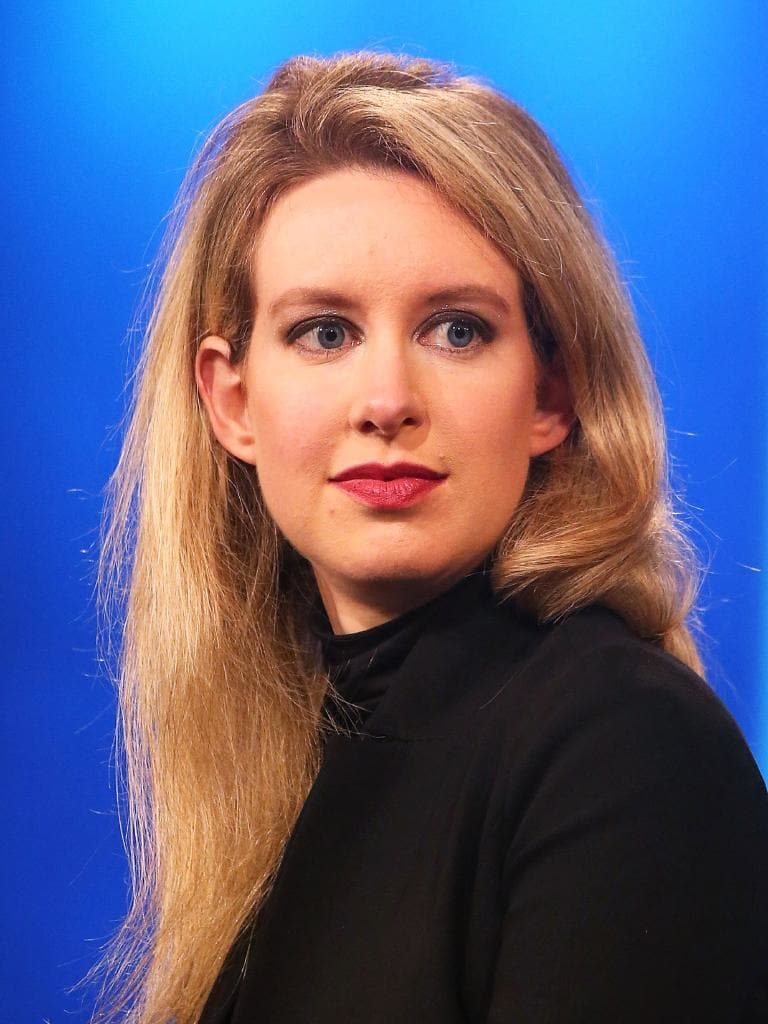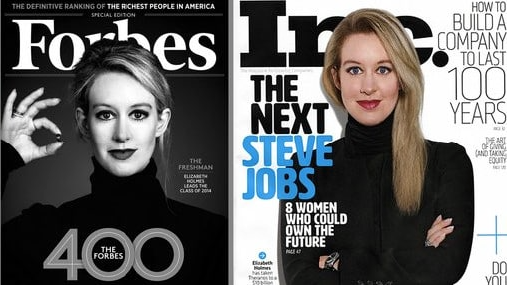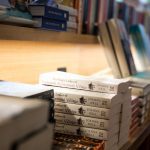News & Reviews
Bad Blood – John Carreyrou
How did she do it? How did a 19-year-old college dropout become, by age 29, Silicon Valley’s first female billionaire entrepreneur, a corporate leader with a personal chef who made her green vegetable juices?
That’s the question that’s woven into the rich, mesmerising fabric of John Carreyrou’s Bad Blood. It’s a thread any reader will want to follow until the end.

Elizabeth Holmes claimed she had invented a device that could conduct sophisticated blood tests from a tiny amount of blood drawn from a finger prick. Gone were needles and the search for a vein. It would revolutionise healthcare and save lives.
Holmes, who was awarded a scholarship to Stanford but dropped out in her sophomore year, saw herself as the next Steve Jobs, and so did a lot of supposedly smart, wealthy men who backed her company Theranos.
Using family connections and leverage, as well as her charm and offers of stock options, Holmes was able to lure big names to serve on her board, among them Henry Kissinger. Her trophy snare, the man who would be her most loyal defender, was George Shultz, a former secretary of state. A family friend, Shultz doted on Holmes.[/column]
On one occasion, most of the board concluded that Holmes should be removed as chief executive because she was too young, too inexperienced. Which she was. But, “with the right mixture of contrition and charm”, Carreyrou writes, she persuaded the board to reverse its decision.
Holmes never told the board, or anyone else, that the company’s president, Ramesh “Sunny” Balwani, was her boyfriend. They lived together in his mansion in a wealthy enclave. Twenty years older, Balwani was known for an “aggressive, in-your-face-management style”. He demanded absolute loyalty, though Carreyrou rejects suggestions he was Holmes’s Svengali.
At times, the story becomes almost farcical, the jaw-dropping audaciousness of Holmes’s lies competing with the ease with which executives swallowed them. Negligence, not due diligence, marked the board, investors and business partners.

Safeway, the supermarket chain, lent Theranos $US30 million and undertook a massive renovation of its stores to provide space for the blood-testing machines. The company’s chief executive considered Holmes a “precocious genius” and treated her with rare deference.
Walgreens, America’s second largest drugstore chain, spent $US325m to create “wellness centres” in its stores for Theranos testing. Walgreens executives had their fingers pricked to have their blood tested on Theranos machines. They never got the results.
Holmes denied Walgreens access to Theranos labs. But she insisted the system had been validated by 10 of the largest pharmaceutical companies. In fact it hadn’t been validated by one company at any time. Walgreens didn’t bother to check. Nor did anyone else.
Holmes was a member of the prestigious board of fellows of the Harvard Medical School. Then president Barack Obama invited her to a state dinner for the Japanese prime minister, and made her a presidential ambassador for global entrepreneurship.
How to explain it. “She had this intense way of looking at you while she spoke that made you want to believe in her and want to follow her,” said one of her best friends at Stanford, who Holmes convinced to work for Theranos.
Journalists aided and abetted Holmes’s rise to riches. Her baptism was an article on the editorial pages of The Wall Street Journal that proclaimed she was the “next Steve Jobs or Bill Gates” and said her blood-testing method was “faster, cheaper and more accurate than the conventional methods”. It wasn’t.
Fortune magazine put her on the cover with the headline: THIS CEO IS OUT FOR BLOOD. She reached the pinnacle when The New Yorker did a largely hagiographic profile.
But it was also a journalist who brought her down: Carreyrou. He was a reporter at The Wall Street Journal. Yes, the same paper that helped make her, but that article was on the editorial pages. Carreyrou was a reporter.
In this book he recounts how he received a tip, then methodically persuaded former and present employees to talk to him. It is as riveting and compelling as the arc of Holmes and Theranos, and he tells it with his ego in check.
Theranos’s legal team was headed by David Boies, one of America’s top trial lawyers. He had represented the government in a successful antitrust case against Microsoft; gay activists in a successful challenge to a California law that sought to ban gay marriage; and Al Gore in Gore v Bush, the legal case over the 2000 US presidential election results in Florida. But behind his white-knight reputation (at least among liberals) was a ruthless lawyer who would stop at almost nothing for his client.
One of Carreyrou’s sources was Shultz’s grandson Tyler Shultz. He worked at Theranos after graduating from Stanford, quitting when he discovered that the blood-testing machines didn’t work and Holmes was fabricating results.
When the young Shultz took his concerns to his grandfather, the elder man rebuffed him, siding with Holmes, even holding a birthday party for her, to which he didn’t invite his grandson.
Boies and Holmes went after the young Shultz unmercifully. They wanted him to name names, to squeal on other employees or former employees who had talked to the reporter. Boies threatened to sue him and his family, to bankrupt them.
(Boies’s good-guy image suffered greatly earlier this year when it was revealed that, on behalf of his client Harvey Weinstein, he had engaged in bare-knuckled tactics to kill stories in The New York Times and The New Yorker, including hiring private investigators to dig up dirt on reporters.)
Theranos’s largest investor was Rupert Murdoch who, of course, owns The Wall Street Journal and The Weekend Australian. Holmes had persuaded Murdoch to put $US125m into Theranos. Holmes met Murdoch at least four times in an effort to have him kill the story. He refused to interfere with his editors.
The story ran. Holmes was finished. Federal agencies circled. Last month a federal grand jury indicted Holmes and Balwani on nine counts of wire fraud and two counts of conspiracy to commit wire fraud. They have pleaded not guilty. Holmes has stepped down as chief executive.
If Holmes’s story sounds as if it’s made for the movies, it is. A documentary, The Inventor, by Oscar-winning filmmaker Alex Gibney, is scheduled for release later this year. And Jennifer Lawrence will portray Holmes in a feature-length film written by Vanessa Taylor (The Shape of Water) and directed by Adam McKay, who wrote The Big Short.
Let’s hope they produce a movie as compelling as the book.
Raymond Bonner.
This review appeared in the Weekend Australian, on 7 July 2018.


